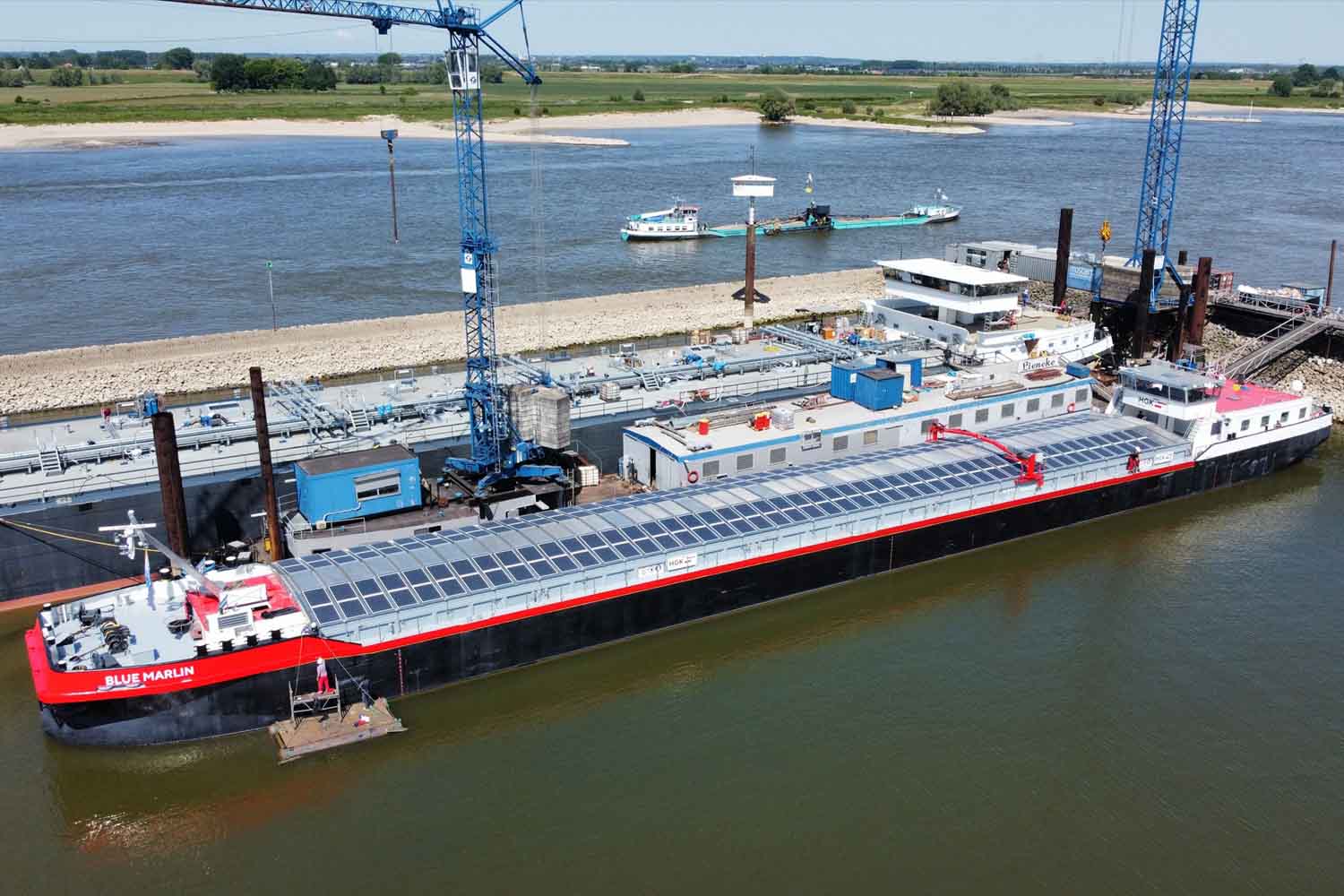A Dutch-built river cargo ship is the world’s first to directly power its motor with solar energy, marking a breakthrough in low-emission freight.

©Wattlab
A cargo ship moving silently through inland waterways, powered by the sun. It may sound like something out of a sci-fi novel, but it’s already slicing through German canals — and setting a world record while doing it.
Meet the Blue Marlin, the first cargo vessel to use solar panels not just to power its internal systems, but also to directly run its electric motor. A major breakthrough for sustainable transportation, particularly for inland freight, which is often overlooked in discussions about decarbonizing logistics.
The innovation hails from the Netherlands, where the startup Wattlab has been working to reduce maritime reliance on diesel. They’ve just delivered a 35-kilowatt (47-horsepower) photovoltaic system — made up of 192 solar panels — to the shipping company HGK Shipping. The system is installed directly on the vessel’s surface, turning the Blue Marlin into a floating solar array. The ship is now operating along Germany’s canal network, showing what might just be the future of inland freight.
“We are the first to use the sun to actually move a ship,” said David Kester, co-founder of Wattlab. “The panels are connected not only to the onboard systems but also to the electrical grid that powers the motor.”
Sometimes it runs only on sunshine
The Blue Marlin still carries four diesel generators onboard — for now. But with the help of solar energy, the ship can switch off one generator even during peak consumption. And here’s the real surprise: when traveling downstream and carrying a lighter load, the vessel can cruise entirely on solar power for short stretches. That’s a first-ever achievement in the world of river cargo transport.
The system isn’t just about propulsion. It’s designed to work in tandem with onboard batteries and a smart energy management system, which allocates power where it’s needed most: from lighting and electronics to the actual propeller. The result? Less fuel, fewer emissions, and significantly less noise — a blessing for both the environment and the people who live along the riverbanks.
A step forward from helios — and a leap for river freight
For HGK Shipping, the Blue Marlin isn’t a one-off experiment — it’s a clear evolution from their earlier project, the MS Helios. That ship carried a larger solar system — 312 panels — but those panels only powered the internal systems, not the motor.
“With the Blue Marlin, we’re taking it further: we’re using the sun to turn the propeller,” explained Tim Gödde, HGK’s Director of Fleet Management. “River navigation is already a low-emission system, but now it becomes even more ecological.”
And the maritime industry is watching closely. The Blue Marlin’s success could offer a practical, scalable solution to decarbonizing freight transport, especially across Europe’s extensive inland waterway networks, where energy efficiency is critical and margins are tight.
Beyond the technical details, there’s something deeply symbolic about a ship quietly navigating its way using sunlight. It’s a reminder that a cleaner, smarter, quieter way of moving goods is not only possible — it’s already happening.
Source: Wattlab
